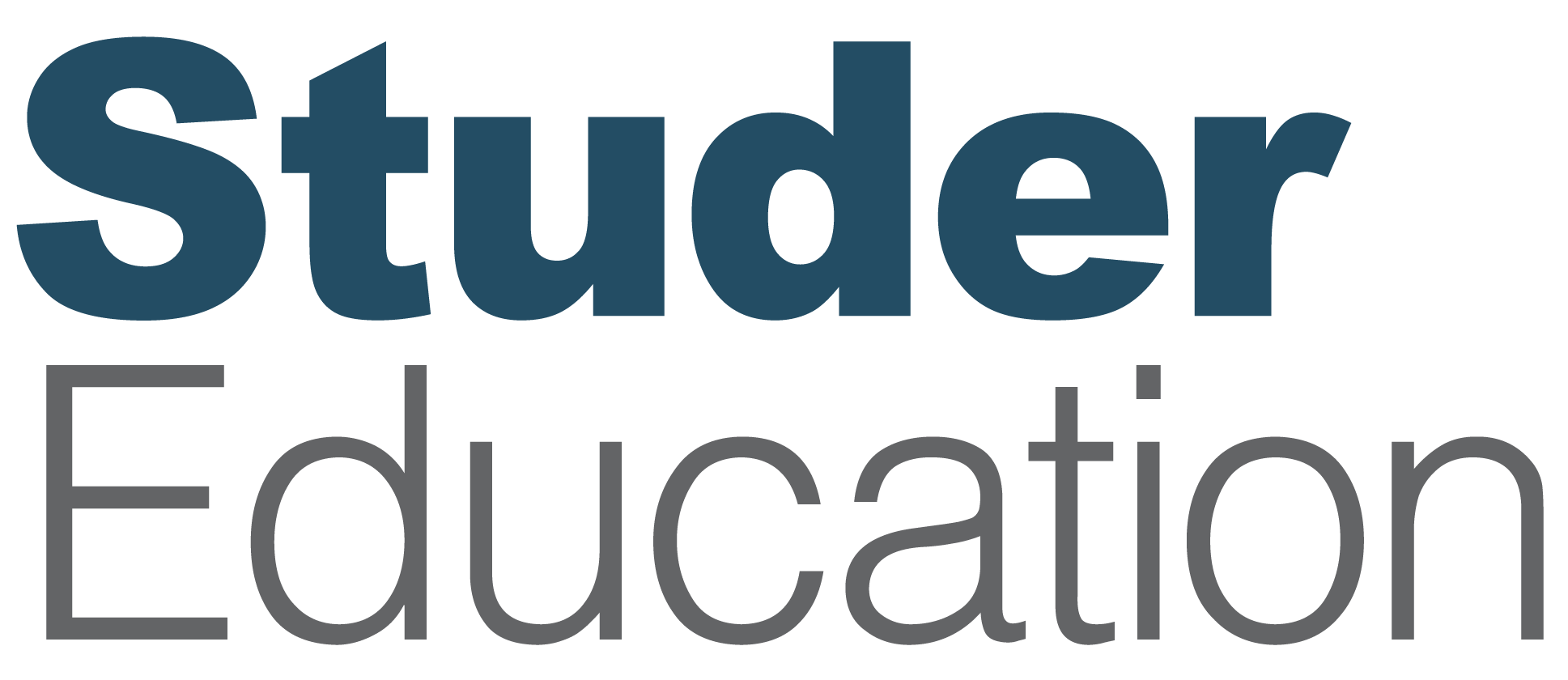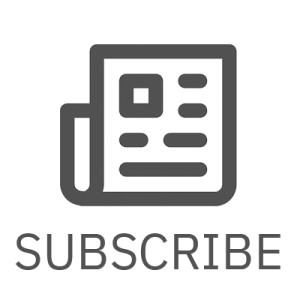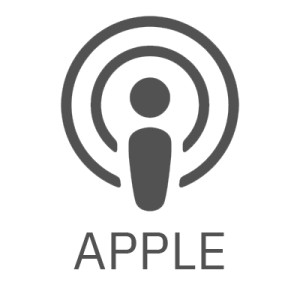
How can you create departments that people want to work in? Amy Andersen and Meghan McAndrews, both operational leaders in El Dorado County Office of Education, join Dr. Janet Pilcher to share about their improvement work in human resources and transportation. Listen and learn how they’ve successfully implemented rounding and targeted training to elevate workplace culture, boost retention, and streamline onboarding practices.
Recommended Resources
Latest Episodes
Amy Andersen: Leadership is not a title, right? It’s a behavior. We all take on that responsibility.
Intro
[Intro music plays in the background.]
Janet Pilcher: Hello everyone. Welcome to today’s Accelerate Your Performance podcast, where we gather each week to share strategies for hardwiring excellence in education. I’m your host, Janet Pilcher. As we get closer to October, let me remind you that What’s Right in Education, our annual K-12 conference, is coming up quickly. If you’ve been enjoying our episodes lately, you won’t want to miss it. Several folks you’ve heard from on the podcast will be there, including one of our guests today, Amy Andersen. Please visit studereducation.com/wrie to view the full agenda and register.
Throughout the summer, I’ve had the privilege of speaking with superintendents, leaders, and teachers who are doing outstanding work in their organizations. This week and next, our focus shifts to the operation side of school district leadership. Effective operational leadership is making thoughtful decisions and taking strategic steps to create positive outcomes for every student.
Today, you’ll hear from two operational leaders who are doing just that. From the El Dorado County Office of Education in Placerville, California, we welcome Amy Andersen, Executive Director of Human Resources. She’s been in the education field for 26 years and she’s held many roles, including teacher, program specialist, and assistant principal. At El Dorado, her focus is retaining and recruiting top talent and fostering a positive work culture, which you’ll hear about today.
Also joining us is Meghan McAndrews, Director of Transportation. Meghan’s here today to share how she’s implementing change in the transportation department and the strategy she’s using to do it. I especially think you’ll like what she has to say about what motivates her to come to work every day. So let’s jump right in.
Interview
Janet Pilcher: It’s with great pleasure that I welcome Amy and Meghan to our show today. It’s great to have you. Meghan, welcome.
Meghan McAndrews: Thank you, Janet.
Janet Pilcher: And Amy, welcome to our show.
Amy Anderen: Thank you so much. Glad to be here.
Janet Pilcher: It’s going to be great to talk about some of the operational areas. I spend time talking about organizational excellence and sometimes when we think about schools and school districts, we’re so focused on the schools and the student side, which is really important because we’re all here for the students.
But people forget that almost half of the people who work within school systems are actually in the operational area because it is kind of a business that we run each and every day. So I’m so appreciative of you all joining us today and sharing the good work that you do.
So Meghan, I think I’ll start with you today. And I’ve had an opportunity to talk to your coach, Dr. Pat Greco. I’ve known Pat for a long time, had an opportunity to work with her as a student coach in Menomonee Falls. So I know you have bright spots that are happening in El Dorado County. I’ve watched you all in your work all these years and just really respect what you do.
You’ve made some changes lately. That’s what Pat tells us and specifically in the transportation department. So let’s start there. What challenges are you seeing and how did you know it was time to start making some changes and build those improvements?
Meghan McAndrews: Yeah, so I got to come in with a clear lens because I stepped into a department that had some transitional things that were happening for a while. So I allowed some space to be able to see how things were happening within the department before I decided what was needed.
So I think that it was important for me to take the time to observe before I put things into place. And with Pat’s help, I was able to see where our needs were, which is pretty common for transportation departments everywhere is that staffing concern, the shortage of drivers.
So we obviously had that as our pain point for the department. So we worked on trying to figure out what happened to staff and how we can build processes to strengthen the team and make sure that we were giving them a great starting point for when they came into the department because we realized with transition there was a lot of influx of information of how processes need to be put in place. So we wanted to put standards and steps in place to make sure it was uniform and platform for everybody.
Janet Pilcher: Yeah, so that’s great to really kind of look at it from that perspective of being able to sit back and watch and observe Meghan and really get a sense on where you start.
So let’s talk a little bit then about the goals that you set. You set goals to improve driver support, things like recruit new drivers, retain drivers, increase driver confidence. I’m sure there’s so many people across the country who are highly interested in being able to do that. So can you talk about some of the strategies you used as you were putting the goals in place and what you tried and the outcomes that you achieved?
Meghan McAndrews: Yeah, so getting the people in the door wasn’t necessarily on us, but from the support of our HR team, we were able to get the people in the door, and what we did was we laid out days of onboarding and we made it so that your first day is really observing and not being trained and really finding out if this is the work that you want to be doing. Because often we would put the training ahead of them being able to observe and finding out through that process that it wasn’t a good fit. So we want them to be able to step into the process a little slower than being put behind the wheel and being able to transport.
A lot of the people that are coming into our department aren’t coming in with a CDL, a commercial driver’s license for the bus certificate because we don’t actually transport our students in buses as our main source of transport. We use transit vans so they can come in with zero experience and so they potentially don’t even have the experience of working with the students that we have. So we want them to be able to absorb and see what their day could be like before we actually start the full training part.
So we realized with that we’re able to have them see what their expectations are before having them actually fulfill them. And then we went into having a coaching through our lead drivers because the process before would be they would go out with maybe a senior driver but maybe not a lead driver.
So we wanted to make sure that we were sending them out with somebody who was going to have the same standard all the time. And we also this last year had the privilege of having a lead driver instructor on staff that we didn’t have before either. So we made sure that they had all the support that they needed and asked them along the way what they needed so that we had the feedback from that.
Janet Pilcher: Fantastic. I mean just really giving them a visual of what their day is going to look like and what they’re going to experience and how to manage and develop them around that. As they were then moving into the work, did you round with them or did somebody round with them?
Meghan McAndrews: Yeah, it was a daily check in every day. So even after they sat and observed for the day I check in with them at the end of the day. “What did you see? What was going on? Did you have any questions about how things were handled because who they were with wasn’t expected to be training them?”
It’s an observation. So they were able to converse and have conversation and talk about what they do day to day but I wasn’t expecting that driver to provide training and I wasn’t expecting that new hire to be doing anything other than absorbing and maybe developing questions so that I can answer them at the end of the day.
So every day in the process they would check in with me and tell me where they were at, tell me what questions they might have and I was able to give them the support every day through that process.
Janet Pilcher: Yeah, so good. Gosh, so, so fortunate. They were so, so, so fortunate in that process and a lot of opportunity for retaining I’m sure based on what you did with them as a leader Meghan.
Amy I’m going to come over to you just let’s stay with onboarding just a little bit or come back to that. When you’re, you all are onboarding, you really focus on improvement, you know, so, you know, why did you, or how did you do that. and how did you build improvement into the work that you do with that onboarding process, and I know with the transportation, but also just in general.
Amy Andersen: Sure, sure, so I have to tell you a few years ago we realized we have a lot of work to do in onboarding organizationally. What happened is we have our human resources technicians who do the recruiting and the human resources onboarding just the little checklist fingerprinting all of that and what was happening before the first day of work the day before a new employee would start oftentimes they would call the human resources technician in a little bit of a panic and be like, “Where am I supposed to show up to work? What am I supposed to wear? What am I supposed to do?”
And we had incorporated rounding already in the human resources department with our human resources technicians and weekly huddles, and it was actually a couple of our human resources technicians that said, “I’m really concerned that we aren’t communicating well enough. The department manager, the hiring manager, that our new employees don’t know what to expect.”
And it was then that I realized we had a huge gap in our system because here we have employees that we want to communicate to new hires, “You are so important that we have every detail planned out for your first week and your first month.” And that appeared to not be happening, so it was at that point organizationally I kind of decided: let’s take stock of what’s actually occurring because we don’t have an organizational wide consistency or onboarding framework or process that we expect every department to do.
So I knew each department was kind of doing their own thing but I really needed to see what actually existed in the organization, and I was new, a little, I’ve been in the organization several years, but new to the human resources department, so I asked each department lead, “What does it look like?” and we saw that some departments had nothing and others we had a few bright spots that had really great systematic onboarding processes.
However, we didn’t have a system that said, “This is what every new hire needs in your department regardless, and here’s where you can customize it as a department lead.” So it was at that point that I took that information to our executive cabinet, and we talked, “Gosh, this is not how we want to be as an organization. It’s the exact opposite, right?”
So I took my HR team and a few key selected department leads and we said, “What are our non-negotiables that every department needs? We have a lot of great opportunities for onboarding in this organization and where do we want to allow that customization?” And we trained our leadership staff.
We said, “Here are some samples. Here’s some really great examples. Here’s what needs to be included in every employee’s first week and first month schedule. And here’s our expectation.” And you need to, we actually held leaders accountable. “You need to get us your onboarding by this date to HR so we can kind of review it and do that.” And we also explained to our leadership why.
Why is this so important? We know when we have really intentional training for new employees, it sets them up for success. We’re going to retain them longer and they’re going to know what to expect.
So that’s how we started. And of course, as an improvement organization, we’ve continued to improve that process. And we actually put on our scorecard last year that it’s 100% expected and required a first week and first month onboarding schedule.
Janet Pilcher: Yeah. And you find that, you know, with that, with people building that consistency, it’s probably something they’re seeing great benefits from as well. Amy, I would guess with that. You know, just thinking, Meghan, looking at, you know, thinking back on the scorecard piece and then connecting it back to transportation and the good work that you’re doing with your team. Have you been in it long enough to really see better retention rates with your team?
Meghan McAndrews: Yeah. So as far as our retention of new staff, I feel like it’s there. We’re also seeing the rotation of staff that is just reaching the age where they’re moving on. It’s a new chapter in their life. So while we’re seeing a change in our staffing numbers, I think the retention of new staff is definitely there.
Janet Pilcher: Yeah. Well, and I think what that shows, you know, when we’re talking about onboarding and pulling new staff in, you know, what that does show is that when we focus on very specific aspects and kind of double down on that, like you all are, that you begin to see those outcomes and those improvements. And that’s really what improvement is all about is taking that slice and really diving deep into it and understanding it.
Amy, like you’re talking about and really looking at what are the things that we can do that are, I love what you said, consistent yet customized. I love that. That’s kind of just wrote that down. I’m like, “Oh, I’ve got to use that in terms of a term because that’s what we really want.” We all want consistency, but people really think they want customization. But if you only have customization, you don’t have consistency. They’re like, “Oh, you know, that doesn’t feel good.” So it really is the balance between those things that you’re showing that when we have that, that we’re able to really begin to move the results on the focus area that is intact there.
So let’s move a little bit, Amy, from onboarding. I know you also have an exit interview process. So we’ve talked about onboarding, but now we’re looking at when people exit the organization. What did you change there? And what are you learning from the interviews that’s helped you pull back into the recruitment and retention of your teams?
Amy Andersen: Sure. So from an exit interview process, we originally had no exit interview process. So we really started from the ground up and have continued to evolve that. So we started an exit interview. We do it through HR. It is anonymous. And we cultivate and curate that data through HR so it can remain anonymous. And we started with some basic questions on that exit interview.
And after about six months of the exit interview process, we realized we didn’t actually know the reason why people were leaving. We failed to include in the exit interview kind of why exactly you’re leaving. So, you know, oops, we changed that and added that so we could learn, is it a promotional opportunity that doesn’t exist in our organization? Or is it pay, any number of pieces? So we added that.
And we know, all of us here know, that culture impacts retention. And one of the things that we learned early on as we hired Meghan to take on the transportation department is that we needed to change the culture of our transportation department in order to retain the individuals that we intend to.
And bringing Meghan on, she knew early on that that was the task and she has done a remarkable job of changing that culture. And so for us, you know, we are able to fill our positions. The drivers who we intend to keep were keeping as Meghan referred to earlier, those newer hires that have come on. In fact, we had several retirements and we had about eight vacancies that we were really anxious about filling. And in a matter of maybe eight weeks, we are now down to only one vacancy.
Janet Pilcher: Oh, that’s great. That speaks really highly of your culture. People start hearing some of the changes that occurred or just what it means to work at a particular place and they start coming to you. That’s a real win for you all. And Meghan, really speaks highly to your leadership and the work that you’re doing in transportation.
Sometimes, Amy, what I hear you say, too, is sometimes they’re the simple things that we just, we don’t intend not to do things. We just fail to do them and realize, wow, those are just things we should have been doing all along and just asking those direct questions, which you did. And then you learn from that to build those improvements.
One of the other things that Pat said that you all are doing are bimonthly leadership meetings known as Thrive, specifically designed for support staff. So talk a little bit. I think Amy, you know, if you will talk a little bit about those meetings and let’s see what you, why you’ve contributed in that way.
Amy Andersen: Well, I love this example. I feel like it’s a powerful example of developing leaders and leadership within your organization. And so we originally started a support staff academy for new support staff and it was great. And the biggest feedback we had from existing employees and some veteran staff, we really need more leadership opportunities. We need more training that we can have. So when a supervisory or management opportunity comes about, we feel like we have some training. And while we really believe leadership is not a title, right, it’s a behavior.
We all take on that responsibility. This reoccurring theme of just more training to be more prepared was coming from rounding leaders, rounding with existing staff. So we actually asked our several of our support staff to take over to transition this support staff training for new leaders and create something called Thrive. That would be for new and existing leaders and provide leadership opportunities and training. So we gathered a team of individuals who were in the support staff positions and we gave them that task.
And it has evolved into something more than what human resources could have designed. And this is the part that is, I think, just powerful and giving permission for people to lead. They came up with ideas of let’s have existing support staff sign up to be a table leader in a content area that they feel like they’re an expert in. They’re going to get leadership skills, facilitation skills. Let’s allow anyone who wants to be an aspiring leader to attend this, whether it’s new content or review content, they can come and allow them to be exposed to expand their skills, feel more ready and prepared for their next promotion.
And for us, when we started this, I think the surprise unintended consequences, we’re now seeing people saying, “I’m ready for that next promotion,” and we’re going to be able to retain the talent because we’re creating this. Yeah.
Janet Pilcher: And how wonderful for your support staff. You know, when you think about historically, sometimes within our systems, our school systems or educational systems, you know, we just don’t pay attention to them enough. We don’t attend to them. We don’t. And again, I don’t think anyone ever has negative intent in that it’s just not what’s at the forefront of our thinking and our minds.
But just to be intentional about it and watch them rise to that occasion, it just shows that by us as leaders, giving them opportunities, they’ll take advantage of those opportunities to grow and develop and just how wonderful for the people who are working with you all day in and day out.
Meghan, I think I’ll close with you today. I see you as kind of that steady, a little quiet, move forward, keep the focus leader, right? Just, and I bet the people who work with you absolutely love working with you. You can just tell that about about you just from the conversation I’ve had today.
But as you think about leadership and as you think about what you’ve learned in this process as a leader, what’s most important to you as you get up and come to work every day?
Meghan McAndrews: Yeah, I think for me, my biggest thing is to be able to check in with my staff and always make sure that I have their input and that I’m rounding with them so that I know where I need to lean into. Because as a leader, I can only count on them to be as strong as I can support. So I need to be able to hear that from them so that I can be there for them.
And every time that we meet, I always face forward with the what is it that I can do to help you so that you can be your best for the students that you support. So I think for me, that’s my biggest thing with being a leader is that I’m not here for myself. I’m here for them so that they can be here for the kids.
Janet Pilcher: Yes. And what a great way to end this episode because that’s really when we show up every day as a leader, if we would all come in with that frame of reference and act on it, not just think it, but act on it like the two of you do, we’ll build better places and places where families can’t wait to send their children for a great education and for the support that you all provide to the districts throughout California and your area. So thank you so much for being a part of this podcast episode today. I thoroughly enjoyed our time together and thank you for what you do.
Meghan McAndrews: Thank you.
Amy Andersen: Thanks for having us.
Conclusion
[Outro music plays in the background.]
Janet Pilcher: It’s like Amy said, leadership is not a title. It’s a behavior. And from what she and Megan shared, it’s obvious they’re hardwiring leadership behaviors in all of their support staff. That’s worthwhile work that’ll create positive outcomes for all students.
As always, I thank you for tuning into this episode of Accelerate Your Performance. I look forward to connecting with you next time as we continue to focus on the Nine Principles Framework so that we can be our best at work. Have a great week, everyone.
-
Janet Pilcher President
If you enjoy the podcast, explore Janet’s latest book, Hardwiring Excellence in Education. Each chapter focuses on the Nine Principles® Framework offering tools and tactics to enhance leadership skills and elevate organizational performance.








